Lupine Publishers | Journal of Anthropological and Archaeological Sciences
Abstract
Yazd-Ardekan plain is one of the most important plains in Yazd Province in terms of natural and human resources. Due to its location between different mountains, this plain provides a natural corridor to cross one of the most important transportation routes that connect the cities such as Qom, Tehran, and Kashan to the southern and southeastern regions of Iran. In the past years, scattered archeological activities have been carried out in this plain, the most important of which is the excavation of Gharbalbiz sitein Mehriz during several seasons. But, in recent years, several seasons of research have been done in this area, the maximum focus of which has been on Meybod Town and Rostaq region. During these activities, many sites related to the different cultural periods were identified, which include the time interval from the Epipaleolithic periodto the Qajar period. Also, the archaeological test trenches of the historical context of Yazd City have provided us with very good information about the Islamic Era, especially in the field of pottery, which shows that Yazd had been considered as one pole ofthis industry in some periods.
Keywords: Relative Chronology; Yazd-Ardekan Plain; Natural Corridor; Islamic Period; Pottery Comparison
Introduction
Yazd Province is one of the provinces in which the volume
of archaeological activities has been very lowthat is why our
knowledge of its archaeological data is very little [1]. But, in recent
years, good activities have taken place in this province, leading to an
increase in our awareness of its archaeological resources. Among
these activities, three chapters of archeological test trenches in
the historical context [2-4], archaeological survey of Rostaq region
[5,6], the first phase of the archeological study of Abarkooh Town
[7]. canbe referred, providing us with generally useful information.
The main focus of these activities is in the Yazd-Ardekan Plain,
which is one of the most important population centers in the
province due to its special natural location, containing about70%
of the province’s population. These activities led to the discovery
and identification of the sites that in terms of chronology can be
dated from the Epipaleolithic period to the Qajar period. Although
many parts of this plain have not been explored yet, this little
available information can lead to thecorrect understanding of its
chronological status (Figure 3 and 4).
Yazd-Ardekan Plain
Yazd-Ardekan Plain´s watershed with an area of about
1,595,070 hectares is located in the northern part of Yazd Province
and covers about 12.1% of the total area of the province. This
plain is spread in the northern latitude of 48 32-32 31 and eastern
longitude of 59 54-57 52, in the central part of the Iranian Plateau,
which is one of the most important plains in terms of natural and
human resources and 6 major cities of the province, includingYazd,
Mehriz, Taft, Meybod, Ardekan, and Ashkezar are located in this
plain [8].
The plain is surrounded by Shirkuh Mountain Range in the
south, Ahangaran and Morgh-e-Zard mountain in the west, Haft
Admin and Hanza mountains in the east and Chakchak Mountain the north and leads to the Siahkuh with a general southeastsouthwest
slope. The highest heights of this plain are Shirkuh peak
with the height of 4075 meters and its lowest point is Siahkuh
Desert with the height of 970 meters above the sea level (Figure
1 and 2).
The climate of this plain is extremely dry and desert. In the past, several qanat provided water for the residents of the plain;but, today, due to their drying, deep and semi-deep wells have replaced them [9]. The most important vegetation that can be seen on the surface of this plain is hawthorn and tamarisk trees, which are specific to the desert areas. Today, in order to prevent the advancement of quicksands, the government has planted these plant species on a very large scale and they have been able to adapt well to the environmental conditions.
Relative chronology of Yazd-Ardekan Plain
Prehistoric Period
One of the sites of Yazd-Ardekan Plain where prehistoric artifacts have been identified is Meybod. The works related to this period are dated from the Paleolithic period to the Iron Age. The main cultural materials that have been obtained from this period include pottery and stone artifacts. Stone artifacts include various types, including chips, blades, perforators, and cores that could be formed for tool-making after chipping (Figure 5). The mentioned tools had been mostly made of siliceous and calcareous chert stones in different liver, milk, gray, brown, and black colors, mostly using the rubbles of the region [10].
Pottery is also divided into two categories. Plain pottery, which mostly had an orange fabric and was tempered with coarse sand and straw. In addition, shredded copper slags was used as the temper. Their inner and outer parts were covered with an ocher slip.
Painted pottery is both well fired handmade and wheelmade. Their outer surface is decorated with geometric patterns, including horizontal parallel lines, solid triangles, hollow and short parallel and diagonal lines, wide bands, and etc. The surface coating and fabric are orange in color and their tempers are straw and coarse sand particles (ibid). In the excavations carried out in the Gharbalbiz sites, some artifacts were found that were located under the sedimentary layers of the sites, dating to the second half of the fourth millennium BC [11] Evidence of the Iron Age in this plain is very limited and some of its findings have been mentioned with suspicion only in the excavations carried out in Narin Castle of Meybod [12]. Although according to the results of the surveys and excavations conducted in recent years, it is possible to suggest a relative chronology for the prehistory of the Yazd-Ardekan Plain, providing a more accurate chronology is needed to complete the surveys and study the obtained the data.
Achaemenid Period
According to the studies, some sites of Yazd-Ardekan Plain can be attributed to this period. The scattered pottery on the surface of these sites has a paste of pea, red, and gray colors, with higher percentage belonging tothe red paste. Also, in most cases, the inside and outside of the container is covered with the pea or red slip and sand temper is used in the clay. Pottery has a good variety, including shallow bowls with small vertically rotated edges [5]. Comparable samples were obtained from the sites of Kahoor Langarchini [13], Pasargad [14] and Gharbaliz site [11].
Also, some samples are comparable to the pottery species obtained from the Persepolis Plain [15]. Additionally, some identified pottery species from Gharbalbiz Site have been dated to this period [12]. Other forms are bowls with curved edges to the outside and an open angle below the edge in the S shape, which were common in the sites of Pasargad [14], Persepolis [16], Gharbalbiz [12], datingback to the Achaemenid period (Figure 6 and 7).
Parthian and Sassanid periods
The GharbalbizSite can be considered as one of the most important sites from which works related to the Parthian period have been obtained. As a result of the excavations carried out in this site, a trapezoidal structure with adobe materials has been identified, in some parts of which stone has been used for more strength. The main part of the building is located in the south and consists of two porches, two corridors on both sides and a small room in the south, surrounded by a thick fence, whose outer surface has been made of stone. Excavation in the southern part revealed a thick corridor and wall along the eastern part. In the northern half of the building, a central courtyard with three porches and a platform made of mud- brick are marked. According to the archaeological evidence, Gharbalbiz building is one of the few known ancient remains related to the Parthian period in the central Iran [17]. Also, the Parthian pottery of this site is comparable to the pottery of Sam Castle in the east of the country [12].
Some types of pottery obtained from the sites of Rostaq region
are also comparable with the Parthian samples [18]. Most of these
pottery have a red fabric and sand temper used inside. Pottery is
wheel-madeand the effects of the pottery wheel are well visible on
the body. These specimens arecomparable with the ones obtained
fromthe northeastern Iran, Sam Castle and the Qomes Site [19].
Evidence has been obtained from the Rostaq region that may
be dated to the Sassanid Period. The pottery is wheel-made and in
most cases has a red fabric covered with a pea or red slipand its
used temper is also sand. Among the obtained pottery species are
bowls with raised edges and turned outwards, similar samples of
which have been obtained from Yazdgerd Castle [20]. Other types of
pottery are the ones decorated with carvings that are comparable
to the samples obtained from the Sassanid period [21].
The Early Islamicperiod
Archaeologically, very little information is available from the early Islamic period in the Yazd-Ardekan Plain, except for some sites of the Rostaq region that can probably be dated to this period because some types of pottery are comparable to the samples obtained from Ras al-Kheimeh [22]. Archaeological excavations in the Meybod Town have not found any site that can be considered related to the early Islamic period. Due to the lack of the archeological activity, no correct information is available on the conditions of the sites in other parts of the plain.
Seljuk Period
One of the most important types of pottery that can be dated
to this period is the splashed pottery, whose examples have been
obtained in the soundages of the historical context of Yazd. This
type of pottery, which mostly includes bowls and cups, has pea and
red fabric,using sand temper inside.
Sgrafitto pottery was also one of the other data dated to this
period. Like the previous type, the fabric of this type of pottery,
is in red or pea colors using sand temperinside. The motifs that
also decorate the dish are geometric and mostly include vertical
or horizontal diagonal, wavy and parallel lines in their inner body.
Comparable samples have been also obtained in the excavations of
Alamut Castle [23] and Ghubayrā [24].
One of the identified sites in Yazd-Ardekan Plain, which can be
dated to this period, is Malekabad. Although pottery dating to the
Islamic Middle Ages has been scattered throughout the site, there
are many specimens of the splashed glaze that can be dated to this
period as well. The fabric of these pottery is mostly pea-colored and
sand temper has been used inside them; also, in terms of form, they
mostly include bowls and cups [18].
The Ilkhanid Period
In the Ilkhanid period, the region enjoyed good prosperity. In
this period, after Al-Muzaffar government came to power, a new
chapter began in the development of the region, so that the peak
prosperity and cultural greatness of Yazd is related to the same
time [25].
One of the most important sites from which works related to
this period were obtained is the historical context of Yazd. In the
test trenches made in this site, a large amount of data was composed
of the pottery decorated with the under glaze-paintings, which
was a common species in that period [26, 27] in the archeological
literature, it is referred to SilhouettePottery (decorated pottery in
black under a clear turquoise glaze). These potteries mostly have a
pea-colored fabric made of sand temper. The cover of the mentioned
pottery was mostly pea-colored mud, which after decoration was
covered with the turquoise, green, or transparent glazes.
The motifs of the mentioned pottery are also geometric and
plant [28] and in very few cases, the inscription has been also used
to decorate the pottery [29]. Comparable examples with it were
obtained from the sites such as Ghubayrā [24], the tomb of Sheikh
Safi al-Din Ardabili [30], Alamut Castle [23], Golkhandan Bumehen
Fortress [31] and Toos [32]. An example of tiles decorated in black
under a clear turquoise glazehas been installed in the porch of the
Yazd Jami Mosque, which has a date of 765 AH [33].
In the studies carried out in the Rostaq region, several sites
related to the Ilkhanid period have been identified, among which
we can mention Tudeh, Chahardeh and Khiyareh sites. In the
Meybod studies, Ilkhanid sites have been identified, among which
the areas of Jahanabad 2, Jahanabad 5, and Tal-e Mesgaran 6 can be
referred [10].
Zarrinfam species was also obtained in the soundages of the
historical context of Yazd City, most of which are related to the tiles
and are decorated with plant, animal, and inscription motifs. Some
of the discovered specimens have been made in the molded method
[28) which can be compared with the specimens in the shrine of
Imam Reza in terms of technique [34] and the Thakht-e- Soleyman
[35].
White and bluesamples that can be confidently attributed to this period were not obtained except for a few cases, in which the container was comparable to the common dishes in the period in terms of form [28, 29] and an example of it has been obtained in Soltanieh excavations [32].
Timurid and Safavid period
According to the trenches made in the historical context of
Yazd City and the identified sites in the Rostaq region, a lot of
pottery evidence was identified that can be considered related to
the Timurid period. These pottery evidences are mostly blue and
white species that are decorated with plant, geometric, and animal
motifs [36]. According to the results of XRD and XRF experiments
performed on the mentioned pottery, Yazd can be considered as one
of the most important centers for the production of such utensils.
Some found specimens are comparable with the ones in the
Royal Ontario Museum [37], Uzbek History and Art Museum [38]
and Metropolitan Museum [39].
From the Safavid Period, traces and evidences were identified in
some sites, among which we can mention the Tudeh and Chahardah
sites [18]. From the soundages of the historical context of Yazd, a lot
of pottery evidence related to this period was identified [29]. White
and blue pottery is one of the most commontypes of pottery in
this period and some samples that are comparable to the obtained
evidence are preserved in the Victoria Albert Museum [40], Ardabil
Museum [41], and the Metropolitan Museum [42].
The decorative motifs of the mentioned pottery also include
plant, geometric, animal, human, and in some cases, Chinese-style
motifs, such as clouds, trees and animals, used in this regard. Shapes
of this species include bowls, plates, vases, saucers, and cups.
Kerman pottery is another type that has been obtained in the
studies and test trenches of the historical context of Yazd City. Their
decorative motifs, which were common types in the Safavid period
[43], include plant motifs painted with blue, white and black colors
on a white background and finally a little green glaze covered them.
The main production center of such dishes was Kerman City [44]
and the obtained samples from Yazd are also comparable with
them.
Celadon is another common species of this period that has been
obtained in the excavations and surveys of Yazd region and can be
compared with the samples obtained from Kerman [45].
Qajar Period
One of the significantidentified periods in the Yazd-Ardekan
Plain is Qajar period. This period has been identified in the Meybod
surface surveys such as Kachalag 4, Kachalag 5 and in the Rostaq
such as Mazraeh Khan and Asrabad.
One of the characteristic pottery types of this period is white
and blue pottery, which is much lower in quality than the samples dated to the Safavid and Timurid periods. The fabric of these
pottery is made of kaolin (Porcelain) soil, and in terms of form
includes bowls, plates, and saucers. The motifs that decorate these
potteries are geometric and plant motifs, which in some samples
have the potter’s signature and the date of its construction on the
inner floor of the vessel.
Other evidence that has been obtained in some sites dated to
this period are English-made porcelain decorated with plant and
European motifs [6] and in terms of form, they mostly include a
plate and a bowl.
Pottery decorated with under glaze-painting was also widely
used in this period. This type of pottery mostly has a red or pea
fabricin which sand temper has been used. The motifs are drawn
in black on a background covered with the pea or red flowers, and
the motifs are mostly geometric or plant. Glaze stains have been
also used to decorate the dishes. These types of pottery have been
identified in some sites of Rostaq region such as Mazraeh Khan
[6] and are widely identified in thetest trenches of the historical
context of Yazd [29].
Conclusion
Yazd-Ardekan Plain is one of the most important residential
areas in Yazd Province, which has created a natural corridor that
has caused the passage of one of the most important roads in the
country. This has caused this plain to be noticed by the humans for
a long time. The greatest concentration of the prehistoric works of
this plain is in Meybod region. The oldest archaeological evidence is
related to the Late Paleolithic period, which continues with ups and
downs until the Iron Age. In the historical times, Rostaq region has
been highly noticed and some siteshave been formed in this region.
Although the sites related to this period have been identified from
Meybod and Mehriz regions, the focus of the settlement is in Rostaq
region.
There is not much information about the settlement status in
the plain from the beginning of Islam; but, from the Seljuk Period
to the Qajar Period, very good evidence has been obtained from
the test trenches of the historical context of Yazd in addition to
identifying different sites in the Meybod and Rostaq regions. It
shows that Yazd region was one of the important centers of the
pottery production in some periods such as the Ilkhanid Period
(Al-Muzaffar government), whose products competed with other
regions. Laboratory results also show that this area was one of the
main centers for the production of white and blue pottery, which
was equal to the Chinese samples in terms of quality.
Although according to the archaeological activities, we have
a good picture of the chronological status of the Yazd-Ardekan
Plain, the expansion of these activities can lead us to the better
understanding of the archaeological status of this plain. Our
knowledge of some of its areas such as Ardekan is still at a very low
level and the scattered activities that have taken place in the
Fahraj area do not provide us with accurate information. Also, the
stratigraphy of some sites of this plain can complete our knowledge
of its chronological status.
Read More About Lupine Publishers Journal of Anthropology & Archaeology Please Click on Below Link:
https://journalofanthropologicalsciences.blogspot.com/



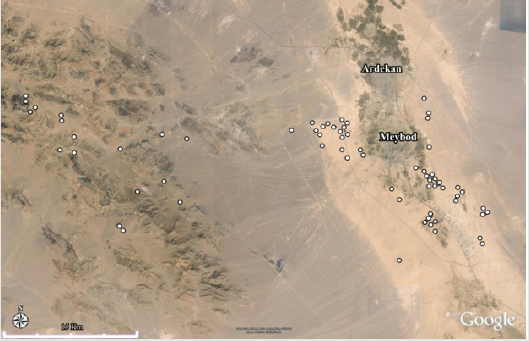
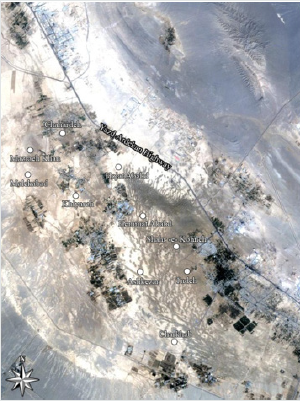
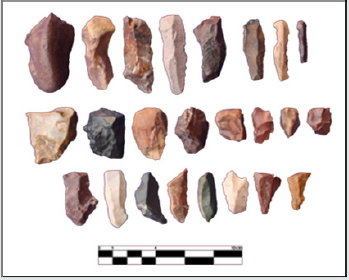
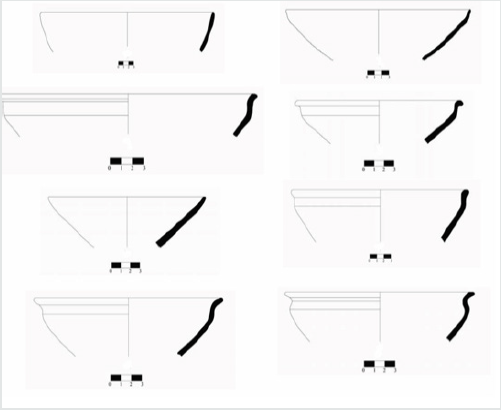

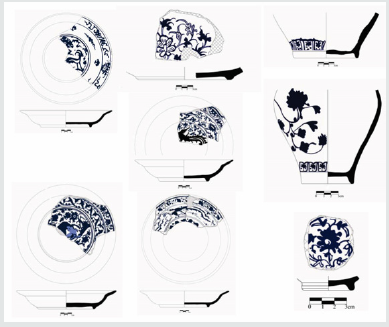
No comments:
Post a Comment
Note: only a member of this blog may post a comment.